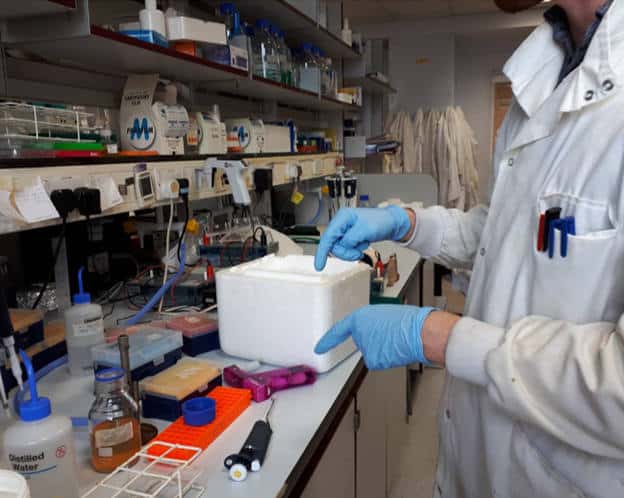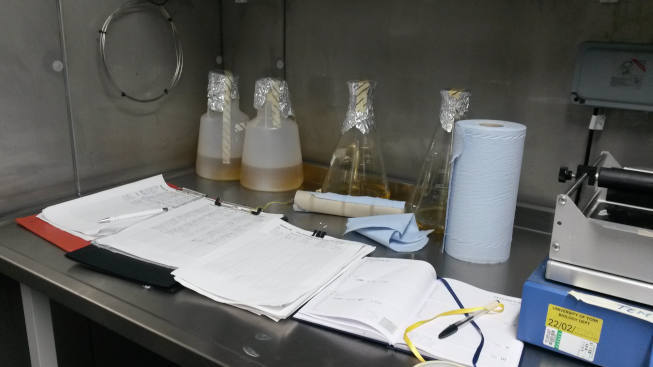Whether it’s our disposable coffee cup or the vanilla flavouring in the coffee; this morning’s shaving cream or last week’s false nails; lifesaving medicines or the components for our renewable energy infrastructures; we are entangled in a world of the products of petrochemistry.
The consequences of this entanglement are increasing evident. Weather extremes, unbalanced ecosystems, species extinction, plasticised oceans: we are well aware that humanity continues to consume its way toward a tipping point in global climate change and environmental damage (UN, 2018). Industrialized societies’ reliance on the consumption of finite resources, particularly petroleum and its chemical derivatives is a major and growing contributor to that long list of current crises (IPCC, 2018). And it will be the most vulnerable (human and non-humans) who will disproportionately bear the impacts.
In response, some nation-states are looking toward technoscience to ‘fix’ the system, to transition from petro-based production models to more ‘environmentally sustainable’ routes for the materials and goods of everyday life (European Commission, 2007). The idea of a ‘bio-based economy’ is gaining political, economic and scientific traction. Proponents intend to meet national and transnational demands for industrial chemicals in ‘cleaner and greener’ ways, whilst fuelling emerging national bio-economies as a route to new forms of economic growth.
We need to start a conversation about how technoscientific research is helping us move toward more sustainable futures and question the possibilities and limitations involved. What techno-solutions are being proposed to create this bio-based economy? Who are the actors involved and what stakes do they hold?
Are bio-economic futures necessarily, always greener ones? Or does technoscience continue to sleepwalk on the path of growth, consumption, and newness that are defining anthropogenic impact?
The technoscientific fields of green chemistry (GC) and synthetic biology (SB) propose two, radically different solutions to the social and technical possibilities of ‘sustainable chemicals production’. Working collaboratively with industry and academic scientists we have been exploring what these model ‘green’ solutions entail and where their limits or challenges lie, exploring what applied social science can do to understand ‘whose green’?
‘We have a machine in a plexiglass dome
Which listens and looks into everyone’s home.
And whenever is sees a new sleeper go flop,
It jiggles and lets a new biggle-ball drop’
(Dr Seuss’s Sleep Book)

Petrochemical legacies
In the first half of the nineteenth-century, chemists discovered how to synthesize organic molecules. By the mid nineteenth-century, routine chemical synthesis had revolutionized human understanding of organic chemistry (Yeh and Lim, 2007), heralding the emergence of the petrochemicals industry which transformed human life (Bensaude-Vincent and Simon, 2012). Powerful and pervasive, synthetic organic chemicals are usually hidden from human gaze, mundane particles woven into the fabric of everyday life.
By 2013, the petrochemical industry accounted for more than a third of the growth in world oil demand, predicted to grow to a half by 2050. The longevity, versatility and economic value of products of petro-chemically derived synthetic organic chemicals make them important and powerful materials (Geyer, Jambeck and Law, 2017). Chemicals production contributes a ‘multi-faceted burden on the environment’, consuming water and energy and contributing 18% of total industrial global carbon emissions, in addition to toxic by-products and the long-term accumulation and dispersal of non-biodegradable waste (IEA, 2018). For good and for ill, chemicals production is an integral, systemic, albeit highly unevenly distributed, feature of global life.
Within chemical industry and research there is growing awareness of the incontrovertible environmental consequences of petrochemical production.
However, arguments centred on the economic and social consequences of changing practice are enrolled to resist changes to production pathways.
Greener futures
But alternatives are emerging. Green chemistry (GC) and Synthetic biology (SB) come under the umbrella of technologies of and for the ‘bioeconomy’. The bioeconomy promises to deliver solutions to interlocking ‘grand societal challenges’ included jobs, economic growth, the development of new products to benefit society and cleaner manufacturing processes to mitigate climate change through non-petro based technoscientific routes (IBLF, 2018). Based on ethnographic research, we show how notions of environmental sustainability are constructed and contested these two emerging models for alternative industrial chemical production.
Superficially GC and SB share a commitment to alternative feedstock. In practice they offer very different routes to production, but routes enmeshed in a shared structural challenge, that of a continued assumption of growth of production and consumption of chemical-based materials.
This is a version of technoscience as the triple ‘win’, a simultaneous route to successful bio-ecology, bio-technology and bio-resource (Bugge, Hansen and Klitkou, 2016). This is what we have come to think of as ‘Relevant Green’ where notions of sustainability are made inseparable from resource exploitation, knowledge commercialization and the imperative of growth embedded in national and global political-economic networks.
Green chemistry arose in the late 1970’s related to long-term efforts toward a cleaner chemicals industry, emerging environmental legislation, punitive costs and shifting public perception (Clark and Macquarrie, 2002). Increasing in importance in the 1990’s, GC molecularly redesigns chemical products and processes to reduce environmental impact by managing waste, hazards and end-product biodegradability (Woodhouse and Breyman, 2005). So, a GC scientist asks: what alternative chemical and biochemical pathways can we exploit to generate new products to meet existing needs? However, the concepts of ‘greenness’ and ‘sustainability’ in GC are multiple and contested. Choices must be made about which elements of sustainability researchers address. Identified as a form of ‘elite social movement’, GC is described as a genuine commitment and potential for meaningful leadership toward bio-ecology from within science (Woodhouse and Breyman, 2005). But such work is undertaken within the existing sociotechnical circumstances of industry systems, public-private funding and policy imperatives where industry priorities around cost, efficiency and consumer perception dominate. This is technoscientific innovation which relies on a version of green that is maximally industrially relevant, where feasible choices about sustainability are circumscribed, and partial sustainability can be co-opted into a symbolic process of ‘green-washing’ (Walker and Wan, 2012).

Synthetic biology has since the early 2000s been framed as the next promissory pathway to a ‘sustainable’ chemicals industry. Combining diverse disciplinary knowledge. SB protagonists ask: how can we replace petro-based processing with genetically engineered microorganisms acting as ‘cell factories’ to make in-demand industrial chemicals? The target compounds are identical to those in current production. The only change is the process, which aims to mitigate the environmental impacts and resource limitations of petrochemistry whilst continuing to meet growing market demand for existing materials such as paint additives and polystyrene. SB’s claims to sustainability combines the three visions of the bioeconomy: bio-ecological possibilities of renewable feedstock, reduced use of toxic reagents, lower CO2 emissions and better management of by-products; bio-resource claims around security, stability and renewability of resources and biotechnological arguments that research can realize marketable tools to cement nations as leaders in the emergent field.
Just as in the case of GC, SB researchers actively critique the limits of sustainability. Researchers describe the tension between working toward creative ecologically sustainable solutions and the pressure to do so within the economic imperatives of industrial research and policy strategies in precarious working conditions (McLeod, Nerlich and Mohr, 2017). In projects associated with products such as plastic pre-cursors, researchers ask how sustainable are those chemicals and their products?
The IB company has gone down the route of let’s make an identical product, like Perspex in a different way. If you are going to make a different product using microbes, you then have to go to the people using Perspex and convince them to use my ‘not Perspex’, are they going to accept that?
When researchers begin to ask what other products could be made by bio-production they consider the systemic social challenges of path dependencies.
They evoke the challenges of locked in systems: product safety and utility, their value in everyday life, livelihoods, broader economic systems and the pragmatics of changing global chemical industries and material supply chains.
As a biotechnology still in-becoming there are emergent questions around cost and competitive viability and actual environmental impact. But bio-production of such chemicals is kept relevant and imperative because existing process options remain worse and alternative products cannot be imagined in current research and funding structures:
[the plastic] is still going to be produced and it is still going to be produced chemically, so if we can do it biologically, it’s a big achievement. […] But if you see the big picture, then this plastic is something that isn’t necessary to the world to survive.
Repeatedly SB researchers discussed the limits to sustainability of the kinds of products that currently drive investment in the SB field for industrial bio-production.
Whose Green?
Social research is increasingly demonstrating how sustainability talk takes place in a context of ‘sustaining the unsustainable’ (Barry 2012, Blühdorn and Welsh 2008), where underpinning ethical questions of sustainability are detached from scientific endeavours. As a result, technoscientific research becomes unable to tackle questions such as: what should be sustained; why should it be sustained and for whom? Social science can pose provocative questions: How are problems and solutions being defined and what interests are at work? What was the problem? How is this the solution?
The cases of GC and SB demonstrate how two technoscientific models for sustainable chemical production are entangled in a similar quandary. Both offer coherent narratives about how sustainability might be reached. But when we look in practices at key decisions, we find that researchers themselves contest the concept of sustainability in tangible ways. This tension between a model and attendant practices has been explored by Strathern (2018) in the concept of audit culture.
If, in spite of evidence from practice that a model requires fundamental change, we persist with that model, we become trapped in trying to fix an already broken system.
In terms of audit ethics this becomes a case of being ‘seen to be social’; in the ethics of sustainable chemicals practice do we risk becoming ‘seen to be green’?

Conclusion
Work has begun elsewhere on expanding the idea of responsible stagnation (de Saille and Medvecky, 2016), asking if it is possible to shift out of the current innovation paradigms and the assumption that innovation must lead to growth? From this purview, current approaches to developing the bioeconomy are fundamentally unsustainable. Questioning the claims to ‘green’ from within technoscience, through serious conversations around political economy and forms of growth can generate novel concepts that can be brought into the discussion of sustainability in chemicals production and consumption.
Given the challenges of modifying existing unsustainable behaviours and entrenched economic systems, we must question whether the existing technoscience fixes for petrochemical problems are enough.
If academic and industrial scientific endeavours remain attached to narrow understandings of the socio-economic dimensions of life, then we have to conclude: no. If society wants to know how we get from the petrochemical here and now, to a (more) sustainable bio-based ‘there’, hard questions need to be asked. Not least, to what extent is the bioeconomy an opportunity for a more sustainable future or another form of ‘lock-in’ to existing consumption patterns – a sustainability of convenience rather than unpicking the problems of production and consumption.
Perhaps at the core of the problem is our inability to reconcile our past with our future. When we are talking about radically rethinking pathways to sustainability it requires us to imagine routes which may break away from the paths of scientific discovery and industrial developments upon which many of the largest global economies are founded, and whose vested interests permeate our political and economic systems. There is both a genuine will and interest to explore meaningful technoscientific alternatives that break from these routes. But politically and financially what realistic and open pathways are available for those interests to be realised in practice?
‘This may not seem
Very important, I know,
But it is. So I’m bothering
Telling you so.’
(Dr Seuss’s Sleep Book)
References
Barry, J. (2012) The Politics of Actually Existing Unsustainability: Human Flourishing in a Climate Changed, Carbon Constrained World. Oxford: Oxford University Press.
Bensaude-Vincent, B. and Simon, J. (2012) Chemistry: The impure science. 2nd edn. London: Imperial College Press.
Blühdorn, I. and Welsh, I. (eds) (2008) The Politics of Unsustainability: Eco-politics in the Post-Ecologist Era. London: Routledge.
Bugge, M. M., Hansen, T. and Klitkou, A. (2016) ‘What is the bioeconomy? A review of the literature’, Sustainability, 8(7): 691.
Clark, J. H. and Macquarrie, D. J. (eds) (2002) The Handbook of Green Chemistry & Technology. Oxford: Blackwell Science.
European Commission (EC). (2007) Measuring progress towards a more sustainable Europe: 2007 monitoring report of the EU sustainable development strategy. Luxembourg. (Accessed : December 3rd 2018) https://ec.europa.eu/eurostat/web/products-statistical-books/-/KS-77-07-115.
Geyer, R., Jambeck, J. and Law, K. (2017) ‘Production, Use, And Fate Of All Plastics Ever Made’, Science Advances, 3(7): 25–29.
International Energy Agency (IEA). (2018) The Future of Petrochemicals, Towards more sustainable plastics and fertilisers. (Accessed: November 5th 2018) https://webstore.iea.org/the-future-of-petrochemicals.
Industrial Biotechnology Leadership Forum (IBLF). (2018) Growing the UK Industrial Biotechnology Base Enabling Technologies for a Sustainable Circular Bioeconomy: A National Industrial Biotechnology Strategy to 2030. (Accessed: September 10th 2018) https://www.bioindustry.org/uploads/assets/uploaded/d390c237-04b3-4f2d-be5e776124b3640e.pdf.
Intergovernmental Panel on Climate Change (IPCC). (2018) An IPCC Special Report on the impacts of global warming of 1.5°C above pre-industrial levels and related global greenhouse gas emission pathways, in the context of strengthening the global response to the threat of climate change, sustainable development. (Eds) V. Masson-Delmotte, P. Zhai, H. O. Pörtner, D. Roberts, J. Skea, P. R. Shukla, A. Pirani, W. Moufouma-Okia, C. Péan, R. Pidcock, S. Connors, J. B. R. Matthews, Y. Chen, X. Zhou, M. I. Gomis, E. Lonnoy, T. Maycock, M. Tignor, T. Waterfield. Geneva: World Meteorological Organization. (Accessed December 3rd 2018) https://report.ipcc.ch/sr15/pdf/sr15_spm_final.pdf.
McLeod, C., Nerlich, B. and Mohr, A. (2017) ‘Working with bacteria and putting bacteria to work: The biopolitics of synthetic biology for energy in the United Kingdom’, Energy Research and Social Science, 20: 35-42.
de Saille, S. and Medvecky, F. (2016) ‘Innovation for a steady state: a case for responsible stagnation’, Economy and Society. 45(1): 1–23.
Strathern, M. (2008) ‘Robust knowledge and fragile futures’. In A. Ong & S.J. Collier (eds.) Global Assemblages: Technology, Politics and Ethics as Anthropological Problems. Massachusetts: Blackwell Publishers, pp. 464-481.
Walker, K. and Wan, F. (2012) ‘The Harm of Symbolic Actions and Green-Washing : Corporate Actions and Communications on Environmental Performance and Their Financial Implications’, Journal of Buisness Ethics. 109(2): 227–242.
Woodhouse, E. J. and Breyman, S. (2005) ‘Green chemistry as social movement?’, Science Technology and Human Values, 30(2): 199–222.
Yeh, B. J. and Lim, W. A. (2007) ‘Synthetic biology: lessons from the history of synthetic organic chemistry’, Nature: Chemical Biology, 3(9): 521–525.






